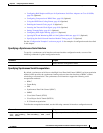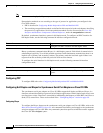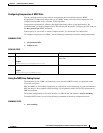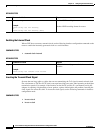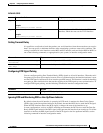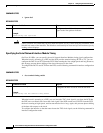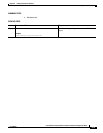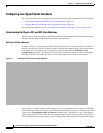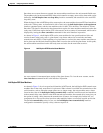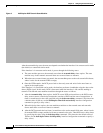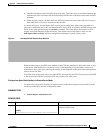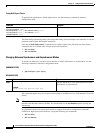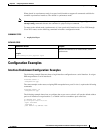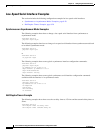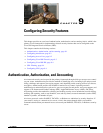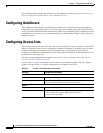
8-15
Cisco 819 Series Integrated Services Routers Software Configuration Guide
OL-23590-02
Chapter 8 Configuring the Serial Interface
How to Configure Serial Interfaces
Once there are no more frames to transmit, the state machine transitions to the wait transmit finish state.
The machine waits for the transmit FIFO in the serial controller to empty, starts a delay timer with a value
defined by the half-duplex timer rts-drop-delay interface command, and transitions to the wait RTS
drop delay state.
When the timer in the wait RTS drop delay state expires, the state machine deasserts RTS and transitions
to the wait CTS drop state. A timeout timer with a value set by the half-duplex timer cts-drop-timeout
interface command starts, and the state machine waits for the CTS to deassert. The default is 250
ms.
Once the CTS signal is deasserted or the timeout timer expires, the state machine transitions back to the
ready state. If the timer expires before CTS is deasserted, an error counter is incremented, which can be
displayed by issuing the show controllers command for the serial interface in question.
As shown in Figure 4, a half-duplex DTE receive state machine for low-speed interfaces idles and
receives frames in the ready state. A giant frame is any frame whose size exceeds the maximum
transmission unit (MTU). If the beginning of a giant frame is received, the state machine transitions to
the in giant state and discards frame fragments until it receives the end of the giant frame. At this point,
the state machine transitions back to the ready state and waits for the next frame to arrive.
Figure 4 Half-Duplex DTE Receive State Machine
An error counter is incremented upon receipt of the giant frames. To view the error counter, use the
show
interfaces command for the serial interface in question.
Half-Duplex DCE State Machines
As shown in Figure 5, for a low-speed serial interface in DCE mode, the half-duplex DCE transmit state
machine idles in the ready state when it is quiescent. When a frame is available for transmission on the
serial interface, such as when the output queues are no longer empty, the state machine starts a timer
(based on the value of the half-duplex timer transmit-delay command, in milliseconds) and transitions
to the transmit delay state. Similar to the DTE transmit state machine, the transmit delay state gives you
the option of setting a delay between the transmission of frames; for example, this feature lets you
compensate for a slow receiver that loses data when multiple frames are received in quick succession.
The default transmit-delay value is 0 ms; use the half-duplex timer transmit-delay interface
configuration command to specify a delay value not equal to 0.



